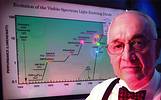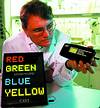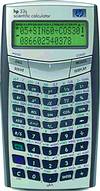
Southern Africa
Altech has released its financial results for the year ending 29 February 2004, announcing that it is well-positioned to show real growth in the coming year with orders on hand at an exceptional R824m and with around 65% of revenues based on annuity income. The group reported that while most of its operations delivered satisfactory results, rand strengthening had created its own difficulties, particularly at its UEC operation. Although UEC's unit volumes were 39% higher than the previous year, it said revenue was down 7% in rand terms. However, in US dollar terms, the same revenue was actually up 28%.
Argil Venture Capital has invested over R6m in Industrial Fingerprinting Solutions (IFS), a developer of a track-and-tracing and authentication solution for individual products which are labelled with 2D bar codes or RFID tags. The Argil Venture Capital Fund aims to invest R100m in technology-based companies that offer unique, proprietary products and high growth potential. The investors in Argil are Ernst & Young, the Industrial Development Corporation (IDC) and Worldwide African Investment Holdings.
Spescom Software, the US operation of Spescom, has announced that the City of Las Vegas, Nevada, has purchased an enterprise licence of Spescom's eB platform valued at approximately $1m.
Altech has entered into a Black Economic Empowerment (BEE) deal involving its IT division, whereby the companies within that division have been restructured under sub-holding company, Altech Data, and in which an effective 25,01% shareholding will be acquired by Pamodzi Investment Holdings. Altech Data incorporates Isis Telecommunications, Altech Informatics, and Altech Card Solutions. The deal excludes the business of NamITech which is directly held by Altech, and in which Pamodzi is already an effective 28% equity shareholder.
Vodacom has launched the Vodacom Developer Zone, an Internet-based SMS and MMS (multimedia message service) application development platform, providing a unique environment for developers, entrepreneurs and businesses. Powered by mobile messaging company, Clickatell, www.vodazone.co.za is intended to enable developers of mobile applications to use the site to register, connect, test and deploy their SMS application or service in realtime.
VARTA Micro-battery of Germany has appointed Grand Battery Technologies SA (GBT SA) to distribute its product portfolio in South Africa. See 'GBT SA to distribute Varta Micro-battery'.
CommScope Wireless has appointed Hiconnex to distribute its products in South Africa. CommScope offers a broad array of cable solutions for a variety of wireless applications. See 'CommScope now locally represented by Hiconnex'.
A week-long course on IPC certification was held at Midrand recently and was presented by master IPC trainer (MIT), Finn Skaanning from SQC Denmark. The IPC-A-610 Training and Certification Program was a first for South Africa and by all accounts, highly successful. There are 14 official IPC training centres in the world.
IT systems and communications distributor Comztek has won the 3Com Distributor of the Year award for 2003/2004. This is the second consecutive year it has won this award.
Overseas
Business
Infineon Technologies reported revenues of 1,671 bn Euros in its second fiscal quarter of 2004, an increase of 3% sequentially and 13% year-on-year. Net income in Q2 increased to 39m Euros compared to 34m Euros in the previous quarter, and a net loss of 328m Euros in the second quarter of the last fiscal year. The company said sequential growth was mainly achieved through a further increase in revenues from the automotive and industrial business group, and higher sales volume for memory products. The sequential improvement came despite price declines in some product segments, and the negative impact of the weakening US dollar exchange rate.
NEC Electronics reported net sales of $6,5 bn for the last fiscal year, 2% lower than 2003. Operating income was $514m, an increase of 187% from the previous year. Net income was $257m, up 292% from the previous fiscal year. NEC said consumer electronic sales totalled $807m, a drop of 40% from the previous year. Sales shrunk by 44,3%, in 'other' segments.
Microchip Technology reported Q4 2004 sales of $191,5m, up 7,6% sequentially from $178m in the prior quarter, and up 20% from sales of $159,7m in 2003's fourth quarter. Net income for the fourth quarter was a record $46,8m, up 14,7% from the immediately preceding quarter, and up 41,8% from the prior year's fourth quarter.
Xilinx reported revenues of $403,4m for Q4 of fiscal 2004, up 10% sequentially and up 32% from the same quarter a year ago. Net income for quarter was $130,9m, up 165% from $49,4m in the Q4 2003.
Companies
Finisar, a supplier of fibre-optic subsystems and network performance test systems, and Infineon Technologies, have entered into an agreement in which Finisar will acquire Infineon's Fibre Optics Business Unit based in Munich, in a stock transaction. The Infineon Fibre Optics Business Unit develops, manufactures and markets a broad range of fibre-optic datacom and telecom modules and components.
Laird Technologies has acquired Thermagon, a company that manufactures thermally conductive silicone pads, greases, phase change products, adhesives and putties. In addition to these interface materials, it makes thermally-conductive epoxy pre-preg (T-preg), core laminates (DSL) and metal-based circuit board laminates for PCB fabricators.
Smiths Group, a UK medical apparatus and aerospace company, has acquired TRAK Communications, a New York-based designer and manufacturer of microwave subsystems, antennas and related components, for $111,5m. TRAK will form part of Smiths Interconnect, a supplier of application specific electronics for military and commercial markets.
Northrop Grumman has been awarded a 6-year $888m contract by the US Air Force's Electronic Systems Center to contract to develop, integrate and test its multiplatform radar technology insertion program (MP-RTIP) radar. MP-RTIP is a modular, active electronically-scanned array radar system that can be scaled in size for integration on manned and unmanned airborne platforms.
IBM and Stanford University have announced they are working together on the research and development of 'spintronic' circuits. Electron spin is a quantum property that has two possible states, referred to as 'up' and 'down'. The alignment of the spins in a material creates magnetism, but also affects the passage of up and down electrons differently. IBM announced the formation of the IBM-Stanford Spintronic Science and Applications Center - otherwise known as 'SpinAps'.
Omron, Mitsui, Okamura Laboratory, and Power Systems have formed a joint venture aiming to promote the full-scale use of a high performance electric double layer capacitor system called ECaSS (energy capacitor systems). ECaSS is a next generation capacitor system invented in 1992 by Michio Okamura, president of Okamura Laboratory. This breakthrough technology increases charge capacity beyond that of lead-acid batteries and nickel-metal-hydride batteries to a level of capacitance close to that of lithium-ion batteries. According to the companies, ECaSS uses nanogate capacitor technology, activated carbon capacitor technology and innovative electronic circuit technology.
Anritsu has announced the establishment of a Handheld Solutions Partners Program to better address the test needs of wireless network professionals. The creation of the partners program allows Anritsu to more closely work with software providers to develop integrated test solutions faster and easier than before. The deployment of 3G technologies and the continued rollout of 2G and 2.5G networks have made the need for accurate testing and analysis more critical, while also making it more difficult.
Fujitsu Microelectronics America (FMA) and Wi-LAN have announced they are partnering in a bid to be first to market with WiMAX equipment for network operators. The WiMAX (802.16 standard for wireless broadband) is expected to be ratified later this year.
Industry
Worldwide sales of semiconductors rose to $16,28 bn in March, a sequential increase of 4,4% from the $15,58 bn reported in February and a 32,3% increase from March of 2003, according to the Semiconductor Industry Association (SIA). Global sales grew to $48,8 bn in the first quarter of 2004 compared to $36,4 bn in the first quarter of 2003 and $48,1 bn in the fourth quarter of 2003. Sales of microprocessors and DRAMs - circuits primarily used in PCs - showed solid sequential growth in March of 5,3% and 5,9% respectively. Sales of programmable logic devices, widely used in networking and telecommunications applications, were up 12,9% from February, while ASSPs (application-specific standard products) for automotive applications grew by 8,4% in March. Sales were up sequentially for all geographic regions in March, said SIA.
When it comes to ASIC consumption (independent of which functions are embedded in the design), Asia Pacific represents the third largest consumer of these products, having surpassed Europe in 2001, according to In-Stat/MDR. However, by 2008, the Asia Pacific region will in all likelihood surpass The Americas to become the second largest consuming region for these types of products, with Japan in its sights In-Stat says the major reason for Asia Pacific's recent rapid growth spurt is the fact that the vast majority of consumer-oriented products are now manufactured and assembled in the region.
Jon Peddie Research estimates that approximately 57,5 million PC graphics devices were shipped from eight suppliers in Q1 2004, a 7,4% decline from the previous quarter and a 12,9% increase over the same period the previous year. The mobile graphics segment saw a 12,7% quarterly decline in shipments but achieved 29,1% growth year-over-year, outpacing a 9,9% annual growth rate in the desktop segment. Approximately 10,5 million mobile graphics processors were shipped from six suppliers in Q1, an industry record in a first calendar quarter.
Cisco Systems was the top purchaser of semiconductors among networking and optical equipment OEMs in 2003, according to iSuppli. Number-two ranked buyer was Alcatel followed by Siemens in third place.
Location-based services (LBS) - a technology once touted as the next 'killer app' is poised to make a comeback - albeit without the flash and hype. So-called E112 or E911 legislation requires the ability to pinpoint the location of a cellphone placing an emergency call in Europe and North America. According to ABI Research, this legislation, plus commercial success in Asia, is slowly bringing new life to LBS. Stalling LBS adoption are technical challenges in identifying cellphone callers. However, the real money in LBS lies in the services, says ABI. It enables a carrier to raise their ARPU (average revenue per user) by offering value-added location services that will also fuel demand for higher-priced data services.
Technical standards play a vital role in ensuring the success of modern communications systems, but can only do so if those standards are 'fit for the purpose'. To make this achievable, the European Telecommunications Standards Institute (ETSI) website, www.etsi.org, provides an easy-to-use guide for anyone involved in communications standards. ETSI's Technical Committee on Methods for Testing and Specification (TC-MTS) has produced the website as a complete overhaul of its 'Making Better Standards' book that was first published in 1996.
China has agreed not to implement the proposed wireless encryption standard - Wireless LAN Authentication and Privacy Infrastructure (WAPI) - following long-standing objections by industry groups. The standard was to have taken effect on 1 June.
Despite inroads by Microsoft's Windows Mobile OS, ABI Research believes that Symbian will continue to lead the market for cellphone standardised operating systems. In a market that is still driven by proprietary OS - of the order of 98% this year - Symbian, Microsoft and Linux are fighting over a small portion of the total handset market. But 2% of handsets shipped are Smartphones, and amount to about 10 million handsets a year. ABI Research predicts that Smartphones and connected PDAs will represent nearly a quarter of all handsets shipped by 2009.
ClearSpeed Technology of the UK has been awarded an 'Exceptional Research and Development Grant' worth £427 800 from the UK government's Department of Trade and Industry to develop a 64-bit processor intended to address the needs of computing for nanotechnology. Because nanotechnology development can require calculations and modelling at the molecular level, sustained computing performance of 1 PetaFLOP may be required, said the company. The processor aims to overcome the traditional barriers of high performance computing performance - power supply and cooling requirements.
Dow Corning has expanded into the $1 bn specialty organic materials market with the announcement of the launch of its new PI-2000 'Highly Conductive Silver Ink', a breakthrough organic polymer for use in portable, wireless products. Dow Corning's move comes as part of an overall strategy within the company to offer a complete range of materials for today's increasingly diverse electronics manufacturing applications. According to the company this conductive ink offers electrical conductivity that is an order of magnitude greater than other products in the market.
ITU's standardisation arm - ITU-T - is to create a Focus Group that will produce global standards for next generation networks (NGN). The fundamental difference between NGN and today's network is the switch from current 'circuit-switched' networks to 'packet-based' systems such as those using Internet Protocol (IP). The ITU Telecommunication Standardization Bureau said that the need for global standards is critical as most operators expect to move to an IP infrastructure. One area to be addressed is the concept dubbed 'nomadicity', which will give fixed line and mobile users completely seamless communication. The first results are expected a year from now.
A start-up that aims to offer manufacturing assistance in nanotechnology and MEMS has been formed in Austin, Texas. NanoVance said it will address the manufacturing needs of the medical, biotech, IT and telecom industries, making use of fab capacity and technical expertise of partners to develop and manufacture devices on behalf of its customers.
Freescale Semiconductor has established a 'SemiCustom operation' to provide application-specific and customer-specific chips for the networking, communications and embedded processing applications. The SemiCustom operation can deliver chips designed around the PowerPC e300 and e500 cores, StarCore DSPs, serialiser and deserialiser technology, security engines, and mixed-signal circuits, within six to nine months, said Freescale.
Ignios, a company that has developed a multiprocessing hardware and software infrastructure, has raised $3,8m in a first round of financing. The start-up claims its SystemWeaver technology can ease the use of multiple processor cores on a single chip. SystemWeaver provides a unified programming model for a multiprocessor SoC, which enables programmers to develop applications at a high level of abstraction, it said.
Nick Holonyak Jr invented the first practical light-emitting diode (LED) in 1962. Today, LEDs illuminate everything from alarm clocks to the NASDAQ billboard in New York's Times Square. At the 10th annual Lemelson-MIT 2Awards Ceremony in April, Holonyak (pictured) was honoured with the $500 000 Lemelson-MIT Prize - the world's largest single cash prize for invention. Holonyak is currently the John Bardeen Professor of Electrical and Computer Engineering and Physics at the University of Illinois. As an aside, the inventor of the blue LED, Shuji Nakamura, was in January awarded a record $189m (20 billion yen) in compensation from former employer, Nichia, for patent rights that he handed over to the firm.

Technology
Actel has released the results of a third-party investigation verifying that field-programmable gate arrays (FPGAs) based on flash and antifuse technologies are immune to configuration upsets caused by high-energy neutrons naturally generated in the earth's atmosphere. The study also determined that SRAM-based FPGAs are vulnerable to neutron-induced configuration loss not only under high-altitude conditions, as traditionally believed, but also in ground-based applications. The tests, which followed the industry-prescribed JESD-89 test methodology, were conducted in February by iRoC Technologies at the Los Alamos Neutron Sciences Center at Los Alamos National Laboratory in New Mexico. See www.actel.com/products/rescenter/ser/index.html.
Cambridge Display Technology (CDT), the inventor and licensor of light-emitting polymer technology, (LEP) recently received funding from the UK government's Department of Trade & Industry to help further research work and commercial development. CDT resulted from the discovery that the polymer poly p-phenylenevinylene (PPV) emitted yellow-green light when sandwiched between a pair of electrodes. LEP displays are constructed by applying a thin film of the light-emitting polymer on to a glass or plastic substrate coated with a transparent electrode. The application of an electric field between the two electrodes results in emission of light. Jeremy Burroughes, who originally discovered light-emitting polymers, is pictured with some of the latest display prototypes. The CDT research team has synthesised polymers that emit light in the red, green and blue regions of the visible spectrum at low voltage and high efficiency.

Cascade Technologies of the UK is designing and manufacturing products and developing applications for chemical 'sniffing'. The technology platform uses Quantum Cascade Lasers and detectors to sense changing light intensity as the laser light passes through gases. The company says the gas detection instrument will provide an unprecedented level of performance in terms of speed of measurement (up to 1 million times per second) and ultra high sensitivity. It claims that its instrument would be able to detect only one molecule of target gas in every trillion of a sample of air, making it more sensitive than a dog's nose.
HP has unveiled what it claims is the world's most powerful RPN scientific programmable calculator currently available - the HP 33s. Preferred by many engineers, scientists and students for its efficiency, RPN (Reverse Polish Notation) is HP's exclusive time-saving, consistent method for entering and solving mathematical problems. The HP 33s calculator packs 31 kilobytes of user memory along with the powerful 'HP Solve' application into a shirt-pocket-sized unit weighing 119 g. It also conforms to many new exam requirements that call for calculators without text or communications capabilities.


© Technews Publishing (Pty) Ltd | All Rights Reserved